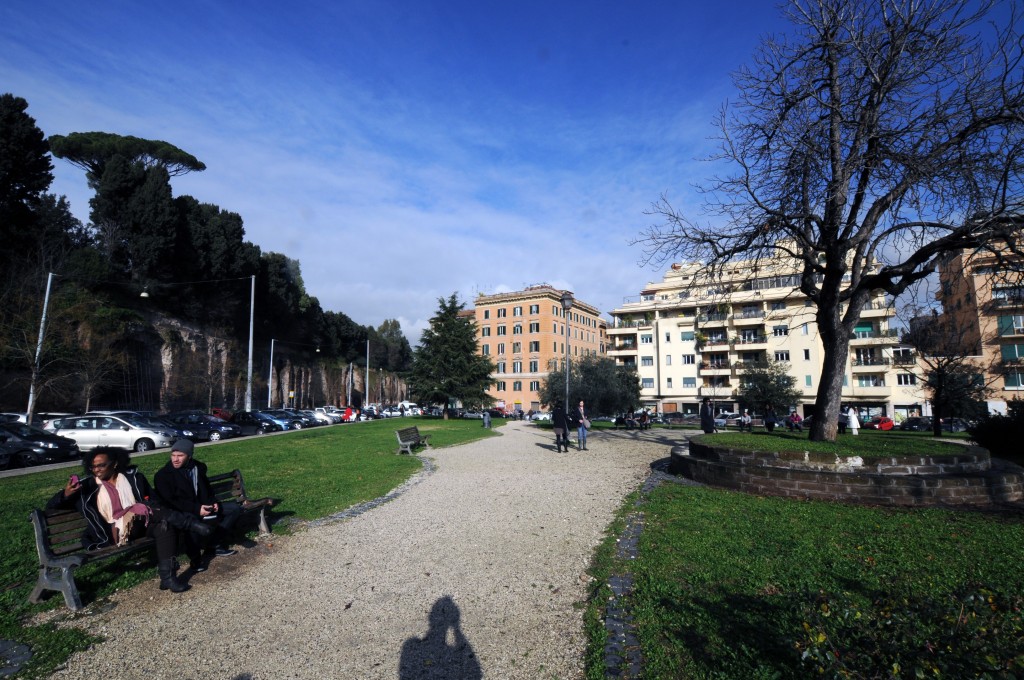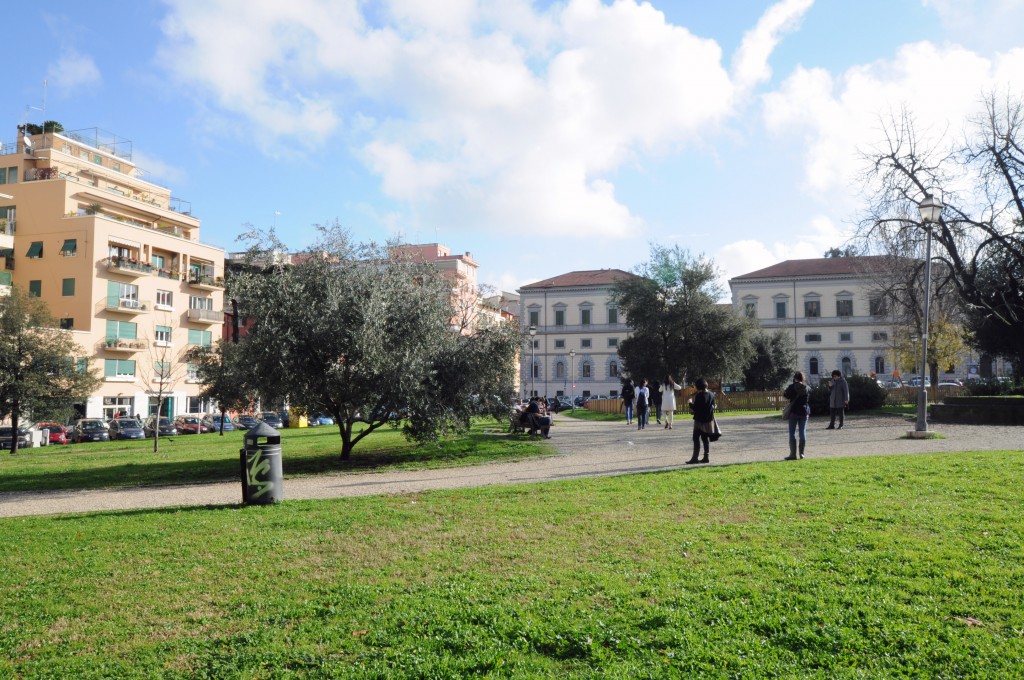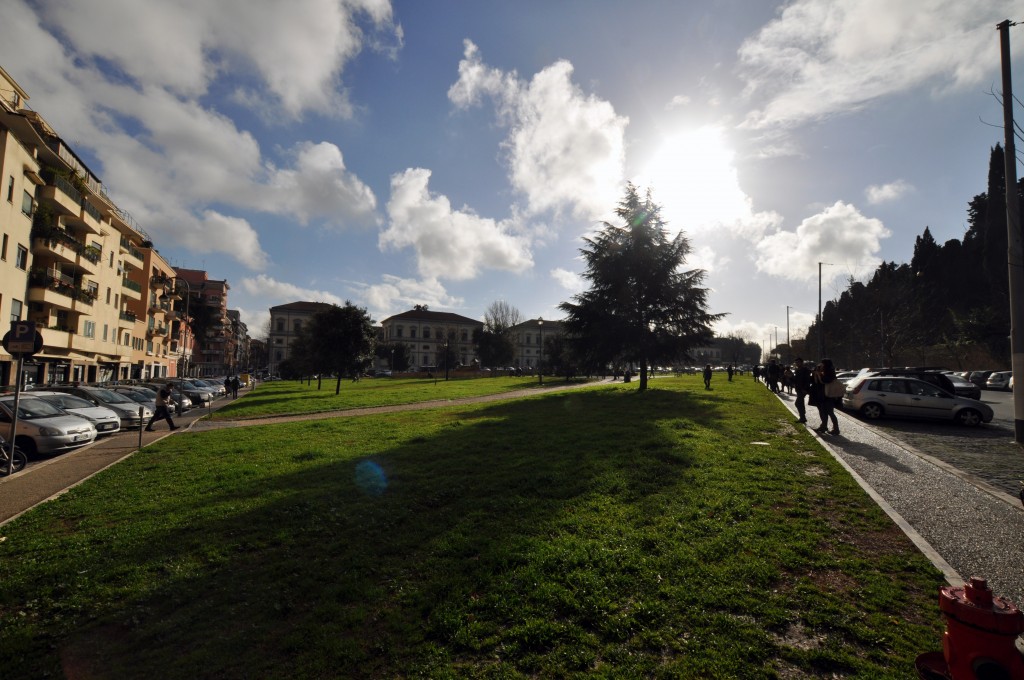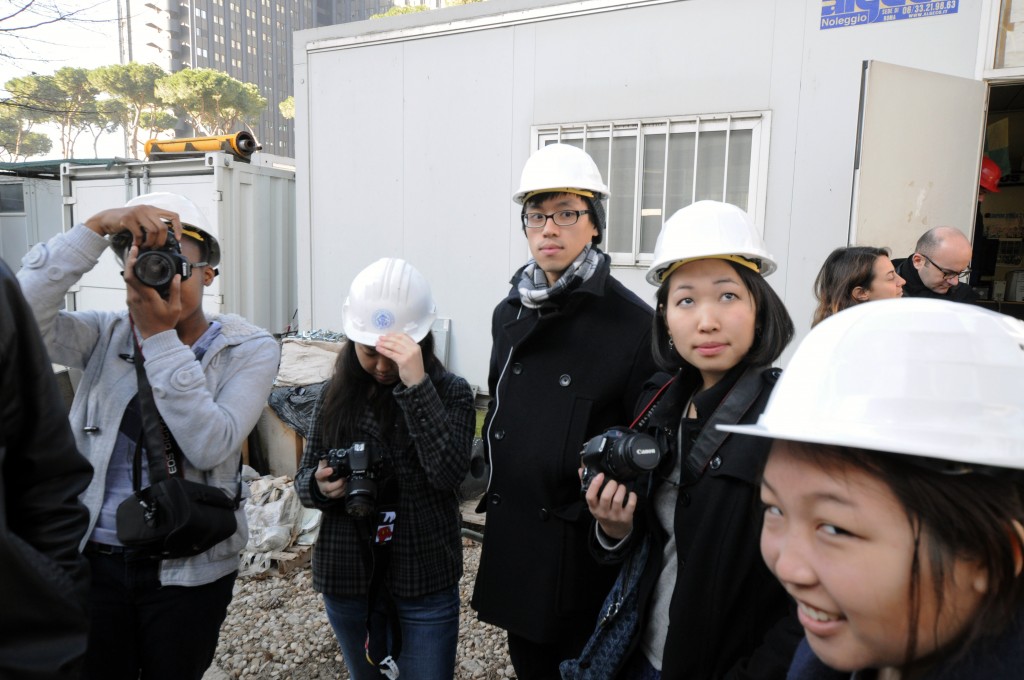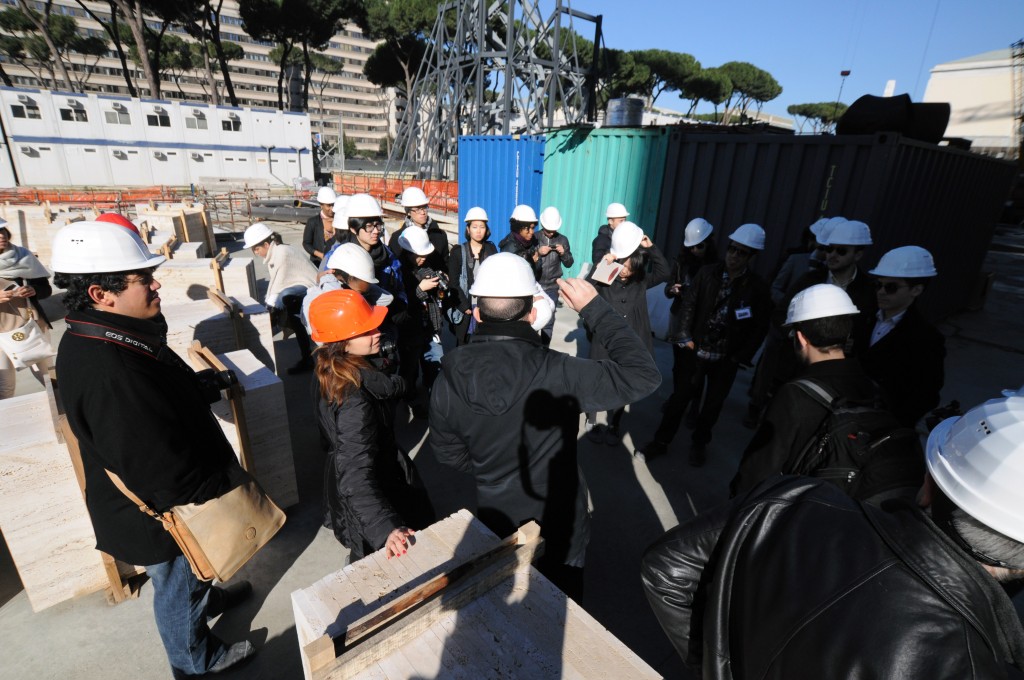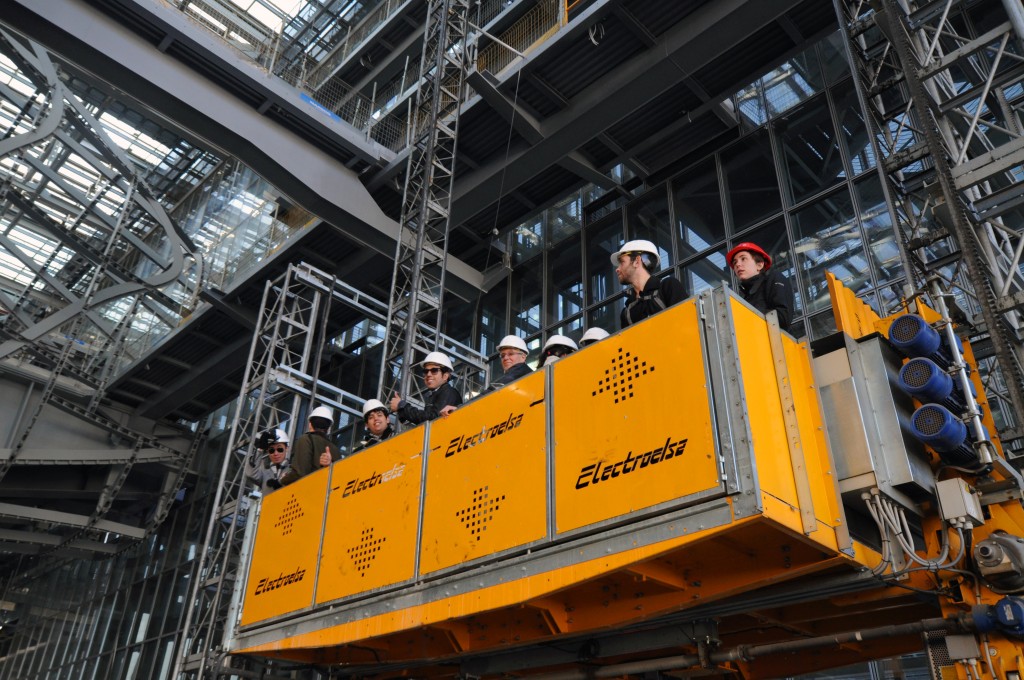As we begin the studio semester, the architecture students traditionally do a lot of work visiting the site of their newest project. In that regard, this semester is no different. The site that has been chosen by our professors as the site of Rome’s newest Center for Peace and Religious Studies is a triangular shaped park only a couple of blocks from the Colosseum.
Of course the program is quite interesting, and being so close to the Colosseum is certainly a very interesting challenge, but to me what is really amazing is that the surrounding area has so much history to offer. The Celian hill, of which our site is part, stretches from the Colosseum to the most important church in Rome, San Giovanni Laterano. It was a residential hill with both elite and common citizens during the late ancient and early medieval periods. The military hospital that flanks our site on its eastern side is a reminder of the four military barracks that were once on the hill. To the west of the site sits the remains of the Temple of Claudius which was built in 43 CE. Interestingly enough, the surrounding area is also rich in religious history (a great reason to choose it for the site of a religious studies center), having been home to Persian cults, Imperial cults, Asian Cults, Egyptian cults, the cult of the god Mithra, and early Christianity. Needless to say, exploring our site has been a wonderful way to get to know more about the history of the city.
As architects tend not to stay in one place for too long (especially if that place is our studio desk), our entire studio class also decided to take a trip to the EUR New Congress Centre, henceforth referred to as the “cloud” because of the amorphous figure suspended in the center. The “cloud,” by Italian practice Fuksas Architects, is sited in the southern part of Rome and was quite the trek in respect to our site and other field trips to date which have been within close walking distance.
Visiting the construction site was quite the experience. Upon our arrival, the guard asked for copies of all of our passports (that’s when we knew they were serious). We then passed through the gate and were each given a pair of steel-toed work boots and a hard hat. Seeing 30 architects in white hard hats is a hilarious site, as it is often the only non-black element of the person’s outfit.
We then proceeded to walk into the building, with Davide Marchetti and George Hascup each pointing out their favorite and least favorite parts of the building which I don’t have the space for here. We then took a massive construction elevator up into the steel frame of the “cloud,” which hosts an auditorium for 1,850 people and conference rooms for over 6,000 which will host congresses, exhibitions and events. All of this will be housed within the organically shaped steel frame covered with a white translucent fabric. We then departed from the site and were treated to an extra long lunch break and the opportunity to explore that part of the city before returning to studio.
One of the best parts of being in Rome is having the chance to escape the “campus” and explore the rich context around it. I’m certainly looking forward to more classes out and about.

